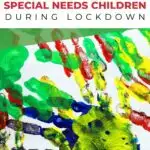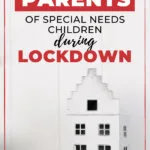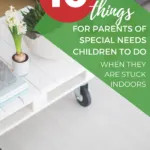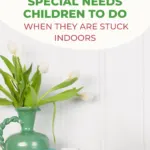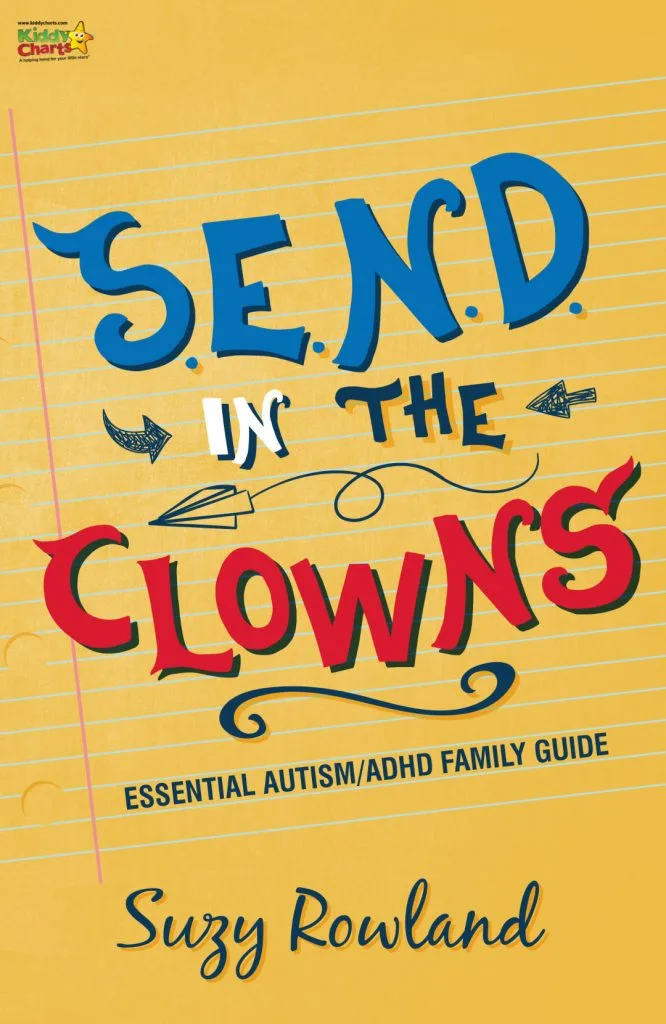Special educational needs is a broad term used to describe any disability that creates a barrier to a child’s learning; this can range from physical impairments such as cystic fibrosis or limited mobility, to ‘hidden’ disabilities such as autism and ADHD. This piece will be useful to most parents of children with special educational needs, but especially those with ADHD and autism. In this post we bring you 10 indoor activities for special needs to help you whilst you are stuck indoors.

Most important thing to remember when engaging with children with additional needs
The key consideration when engaging children with additional needs, is to ensure their comfort and well-being, before, during and after any learning or play activity. Their needs must be central to avoid inadvertently causing them physical pain or emotional distress.

All children have great capacity for play; many will derive pleasure and intellectual stimulation from any increased engagement from their parent. Functional education supports children’s learning in a more organic way, leaving rigid structure of classrooms and textbooks behind! It’s about teaching and learning in a spontaneous way, using the environment as the key stimulus for learning. Autistic and ADHD kids thrive in low stress environments that are less constraining than the classroom.
Imaginative play such as dress up or going camping in your living room are great fun – even for grown up children. As well as the excitement of doing something out of the ordinary, it makes home feel more secure, a place of fun and laughter, which is vital when the world outside seems scary and overwhelming.
Autistic and ADHD kids can be highly sensitive to atmosphere and mood. A whole afternoon spent listening to their favourite song or watching a much-loved DVD, will be bliss to them. Your willingness to step into their world will help them feel accepted and happy, counterbalancing any isolation they experience at school.
Experiment with visuals for your child

Using more visuals and less language, will encourage your child to use more of their other senses. Schools often use visual timetables to support children with additional needs, they explain what’s happening and when, in pictures. Create your own visual timetables with your kids, drawing pictures of what you are doing each day will create a reassuring ‘scaffold’ for their day. Using more visuals and less words may feel uncomfortable to you, but the bond you will establish will be worth it. Doing any child-led activity will boost their confidence and self-esteem, especially if they are anxious or shy. Encouraging your child to ‘teach’ you, is a neat role reversal, which provides you with tonnes of insight about how your child learns. You will learn more about their inner world in the process. For primary autistic kids, experimenting with fabrics, paints, glitter, instruments with soft, swooshing sounds (like maracas) may unlock the key to powerful calming techniques which can be used at times of stress.
Families with special educational needs kids are used to adversity and rising above significant challenges. Many parents of kids with additional needs will find aspects of the pandemic exhausting and stressful, but when it’s over we will see how much we have learned from our kids and gained a deeper insight of our unique children’s talents and abilities.
What activities can we do with our special needs children?
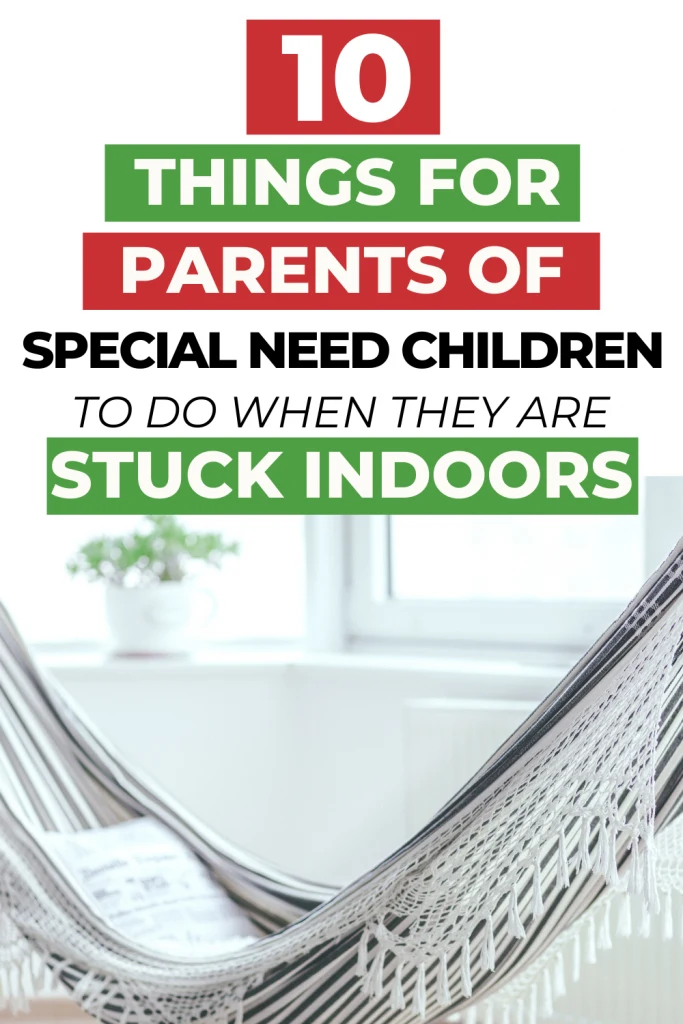
- Use imaginative play – build an indoor tent using kitchen chairs and a quilt – eat your lunch there.
- Make it functional – ask your child to ‘shadow’ you all day, encourage questions, give honest answers!
- Get creative – make a big object small out of anything you can get your hands on. Shrink giant objects to fit on a small table: Eiffel Tower, Big Ben, Niagara Falls, Disney World, aeroplane, elephant. Take a picture. Share on social media.
- Real life charades – go for two hours without using words: use only mime, signs or symbols, drawings.
- Ask kids to be teacher and give you lessons – encourage them to teach’ you about their favourite subject, make a timetable.
- Create a crazy garden design: include animals, birds, water, fruit, flowers, rides, BBQ, seats.
- Write letters or draw a picture for the people you have missed seeing/spending time with
- The Imitation Game: take turns pretending to be someone else in the family, the others try to guess who it is.
- Speed noughts and crosses or hangman: Play these games timed, winner is the fastest in five games.
- Stand and gaze at the stars together, with a mug of hot chocolate (wrap up if it’s chilly).
This post was written by Suzy Rowland, who is the author of S.E.N.D in the Clowns, a family guide for those whose kids have autism or ADHD.
This is a critical journal of Suzy’s journey with her own child, and how she has worked to insure that her child gets the education they need within a system that can make it hard for those that are different to be educated effectively. It provides tips and advice as well as personal experiences for any family going through what hers did. Take a look if you need advice, or if you want to understand more how important advocates are within a family’s journey through autism and ADHD.
If you are looking for other resources and indoor activities for special needs on the site that can help – then do check these out too:
Special needs related resources
Here are some more resources on KiddyCharts that would be helpful for those with special needs.
Reward Me Charts
Our reward charts can be beneficial for those with autism, depending on their specific needs, as they are very visual. It might be worth taking a look.
Parenting a Special Needs Child: 5 top tips
Here are some top tips on parenting a special needs child from a lady who knows.
Tips for potty training special needs children and starting nursery: From a mum who knows
More thoughts on potty training from a mum who went through it.
Tips for preparing your special needs child for school
Finally, thoughts on preparing for school.
If you like this article about indoor activities for special needs, why not sign up to our newsletter too?
Thanks, as usual for dropping by and we hope you come back to us soon.
Helen

